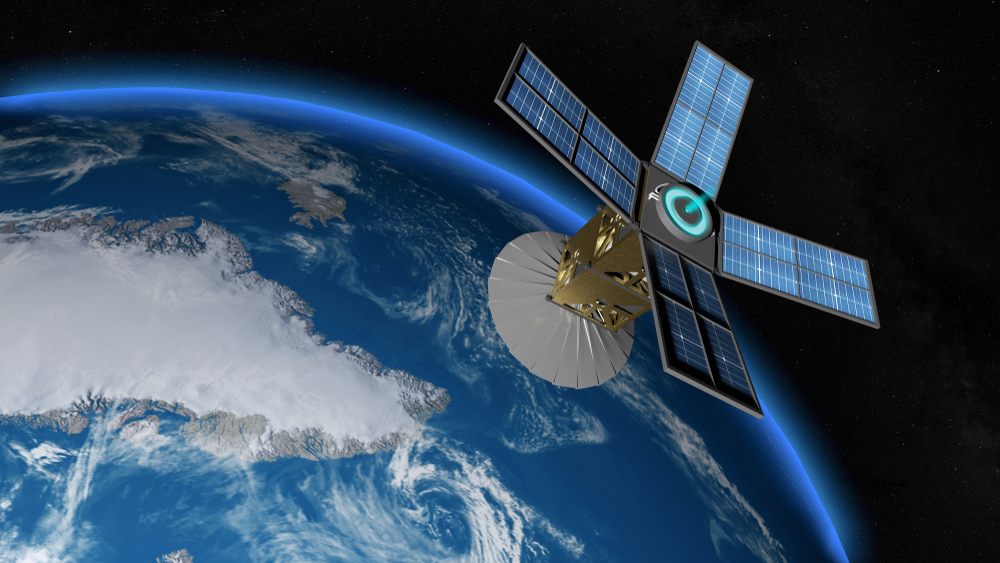In today’s fast-paced, highly connected world, much of what we do—checking the weather, using GPS, watching TV, or making a video call—relies on something orbiting high above us. These powerful machines floating around Earth play a quiet but essential role in modern life. Let’s take a closer look at what they are, what they do, and how they affect our everyday routines.
What Are They and How Do They Work?
A satellite is any object that moves around a planet in a curved path called an orbit. While the Moon is Earth’s natural satellite, the ones we talk about today are man-made. These machines are launched into space using rockets and are designed to stay in orbit, gathering information or sending signals back to Earth.
Some orbit close to the Earth, while others stay much farther away. The distance and type of orbit determine what a satellite can do. For example, some provide real-time weather updates, while others offer long-term climate data.
How They Help Us Every Day
You may not see them, but they’re behind many services you use daily:
- Communication: From mobile networks to television broadcasting, they keep us linked across long distances. Remote villages, ships at sea, and planes in flight all benefit from satellite communication.
- Navigation: GPS technology wouldn’t work without these orbiting tools. Whether you’re driving to a new city or tracking a delivery package, precise location data is made possible from above.
- Weather Forecasting: Weather prediction has become more accurate thanks to real-time monitoring of clouds, storms, and temperature patterns from space.
- Disaster Management: During natural disasters like floods, fires, or hurricanes, they help emergency teams by providing clear images and updates. This can save lives and make rescue efforts more effective.
- Scientific Research: Satellites are used to study Earth’s environment, track climate change, observe polar ice melt, and even explore other planets.
Different Types and Their Purposes
Not all are built the same. Depending on their mission, they vary in size, design, and orbit type:
1. Communication
These are the workhorses of global media. They bounce signals from one point to another, enabling phone calls, internet access, and live television broadcasts around the world.
2. Weather and Environment
Used by meteorologists and climate scientists, these machines observe atmospheric conditions and monitor things like rainfall, snow cover, and forest fires.
3. Navigation and Mapping
They send signals to receivers on Earth to determine exact locations. This technology supports transportation, agriculture, construction, and more.
4. Military and Security
Governments use satellites for surveillance, border monitoring, and secure communication. They help maintain global security and national defense.
5. Scientific Exploration
These devices help scientists gather data about space, distant planets, and cosmic phenomena. Some are sent beyond Earth to explore the far reaches of the solar system.
How They Stay in Space
Once a satellite is launched, it stays in orbit due to a balance between its forward speed and the pull of Earth’s gravity. This balance keeps it from falling back to Earth or flying off into space. Depending on its job, it may be placed in a low, medium, or geostationary orbit.
- Low Earth Orbit (LEO): Located around 200 to 2,000 kilometers above Earth. This orbit is often used for observation and imaging.
- Medium Earth Orbit (MEO): Mainly used for navigation systems like GPS.
- Geostationary Orbit (GEO): Roughly 36,000 kilometers above Earth. These satellites move at the same speed as Earth’s rotation, staying over the same spot. Perfect for communications and weather monitoring.
The Journey to Launch
Creating and launching one of these machines is no small task. It takes years of planning, designing, and testing. Once ready, a satellite is launched into space on a rocket. The cost of a single launch can range from a few million to hundreds of millions of dollars, depending on size, type, and technology.
Reusable rocket technology, like what companies such as SpaceX are developing, is making launches more affordable and frequent.
Challenges and Risks
While they are helpful, they also bring certain challenges:
- Space Junk: Old, broken satellites and pieces of rockets orbit Earth as space debris. These can collide with working satellites and cause damage.
- Security Threats: As more nations develop space technology, there’s a growing concern about hacking or the weaponization of satellites.
- High Costs: Building, launching, and maintaining a satellite requires a big investment, which not every country or organization can afford.
Despite these issues, advancements in technology continue to make satellites smaller, smarter, and more efficient.
The Future of Space Technology
The future looks promising. With new players entering the space race, including private companies, we’re likely to see even more innovative uses for these orbiting tools:
- Global Internet: Projects like Starlink aim to provide high-speed internet to every corner of the planet using thousands of small satellites.
- Space Tourism: As space travel becomes more accessible, satellites will help monitor space weather and provide communication links for travelers.
- Earth Health Monitoring: Future satellites will offer better ways to monitor deforestation, pollution, ocean health, and more, helping us care for our planet.
- Interplanetary Missions: Plans are already in motion to explore Mars and beyond. Satellites will be key to building communication networks across planets.
Also Read:
Spicylittlebunny: Unmasking the Digital Persona, Culture, and Evolution Behind an Online Phenomenon
Conclusion
While they float silently far above our heads, their impact is everywhere. From helping farmers track rainfall to allowing video calls across continents, satellites are deeply woven into the fabric of modern life. They have shrunk the world, connected people, and opened up new opportunities in science and business.
As we continue to explore space and push technological boundaries, these marvels of human engineering will remain at the heart of our progress—quietly orbiting, always watching, and always connecting.

